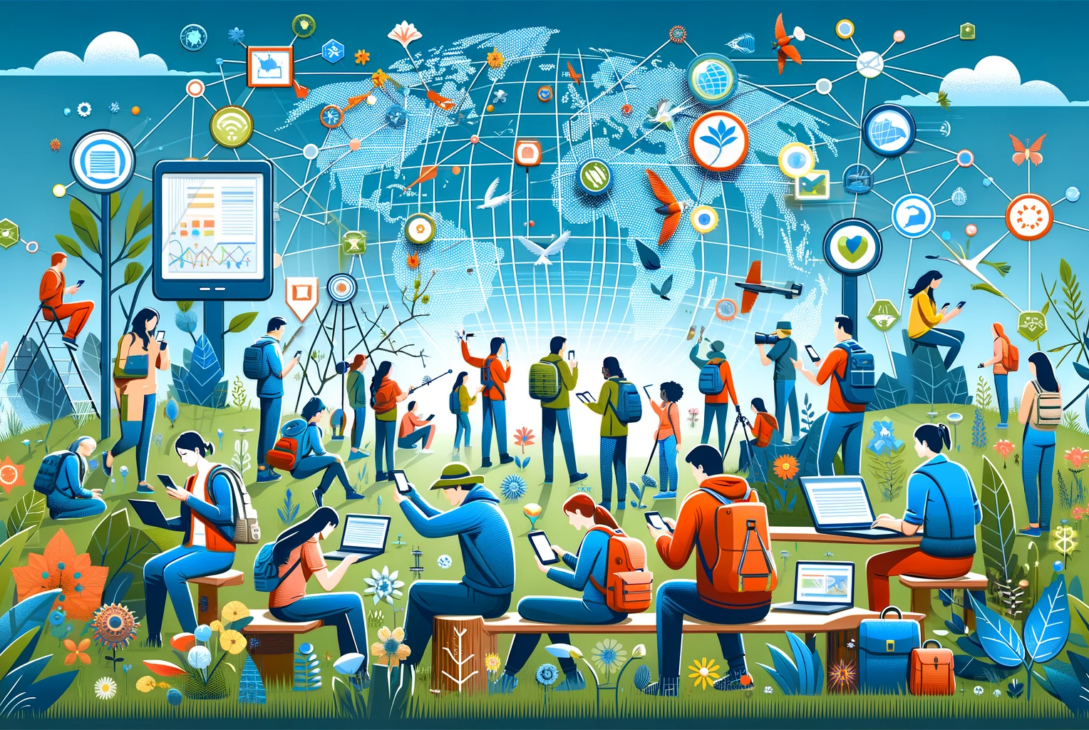In recent years, citizen science has emerged as a transformative force in the realm of research and data collection, harnessing the collective intelligence of the public through innovative online platforms and mobile applications. This participatory approach to science represents a significant shift from traditional research methods, democratizing the process of scientific inquiry and expanding the scope of potential discoveries.
The Emergence of Citizen Science
Citizen science is not a novel concept; it has historical roots dating back centuries when curious amateurs played a pivotal role in the advancement of scientific knowledge. However, the advent of the internet and mobile technology has revolutionized this field, enabling mass collaboration and data collection on an unprecedented scale.
Today, citizen science initiatives range from global environmental monitoring to the analysis of astronomical data, highlighting the vast potential of public participation in scientific endeavors. These projects often involve tasks like observing wildlife, tracking weather patterns, or categorizing galaxies, which are accessible to non-experts but collectively contribute to significant scientific advancements.
The Power of Collective Intelligence
The cornerstone of citizen science is collective intelligence, the combined knowledge and problem-solving ability of a large group of individuals. This concept is particularly powerful in the context of scientific research, where diverse perspectives and localized knowledge can offer unique insights and fill gaps in data that might be overlooked by traditional research methods.

Photo taken from Iberdrola.
Online platforms and mobile apps play a crucial role in harnessing this collective intelligence. They provide user-friendly interfaces that allow individuals from all backgrounds to participate in scientific projects. These platforms also facilitate the aggregation and analysis of large datasets, turning individual contributions into meaningful scientific insights.
Impact on Scientific Research
The impact of citizen science on research is profound. By involving the public in data collection and analysis, scientists can gather data at scales and resolutions that would be impossible to achieve otherwise. For instance, in the field of ecology, citizen scientists contribute to biodiversity monitoring programs, providing valuable data on species distribution and abundance.
These contributions are not just supplementary; in many cases, they are pivotal to scientific breakthroughs. For example, in astronomy, citizen scientists have discovered new celestial bodies through projects like Galaxy Zoo, where they help classify galaxies based on their shapes. Such discoveries underscore the potential of public participation in advancing scientific knowledge.
Enhancing Public Understanding and Engagement in Science
Beyond data collection, citizen science plays a vital role in enhancing public understanding and engagement in science. By participating in these projects, individuals gain firsthand experience in scientific inquiry, learning about research methodologies, data analysis, and the scientific process. This hands-on involvement demystifies science, making it more accessible and relatable to the general public.
Moreover, citizen science fosters a sense of community and collective purpose. Participants are not mere data collectors; they are active contributors to the scientific endeavor, working alongside professional scientists to address global challenges. This collaborative spirit is particularly evident in projects addressing environmental issues, where citizen scientists contribute to both data collection and the development of conservation strategies.
Challenges and Opportunities
Despite its potential, citizen science faces several challenges. Ensuring data quality is a primary concern, as the involvement of non-experts can lead to variability in data accuracy. To address this, many projects incorporate training modules or use algorithms to validate data. Another challenge is maintaining participant engagement over time, which is crucial for long-term studies.
However, these challenges also present opportunities for innovation. Advances in technology, such as AI and machine learning, are being leveraged to improve data quality and analysis. Additionally,
there is a growing focus on gamification and community-building strategies to keep participants engaged and invested in the projects.
The future of citizen science is bright, with emerging technologies offering new ways to participate and contribute. Augmented reality (AR) and virtual reality (VR) are beginning to be integrated into citizen science platforms, providing immersive and interactive experiences that could attract a broader audience. These technologies not only make participation more engaging but also allow for more accurate and detailed data collection.
Specific Examples of Citizen Science Success
To fully appreciate the impact of citizen science, it is enlightening to examine specific examples where public participation has led to significant scientific achievements. In the field of environmental science, projects like eBird and iNaturalist have revolutionized wildlife monitoring. These platforms enable individuals to record bird and wildlife sightings, contributing to vast databases used by scientists to track species distributions and population trends. Such data is invaluable for conservation efforts and understanding ecological changes.

Photo taken from eBird.
In the realm of astronomy, the Zooniverse platform stands out. It hosts a variety of projects where volunteers classify galaxies, identify exoplanets, and even transcribe historical weather data from ship logs. These contributions have led to the discovery of new astronomical phenomena and have enriched our understanding of the universe.
Technological Advancements in Citizen Science
Technology is a key driver in the evolution of citizen science. The use of mobile apps has made participation more accessible than ever. These apps often come with features like GPS tagging, photo uploading, and real-time data sharing, making it easier for people to contribute accurate and valuable information.
Artificial Intelligence (AI) and machine learning are also playing a significant role. They are used to analyze the vast amounts of data generated by citizen scientists, identifying patterns and insights that might be missed by human eyes. This synergy between human participation and machine learning is creating a powerful tool for scientific research.
Overcoming Challenges: Data Quality and Engagement
Ensuring data quality is a persistent challenge in citizen science. However, innovative solutions are emerging. For instance, some projects use a tiered approach where initial classifications made by volunteers are reviewed by more experienced participants or professionals. Others integrate machine learning algorithms to validate and refine the data collected.
Maintaining engagement is another challenge. Projects are tackling this by creating more interactive and rewarding experiences. Gamification elements like badges, leaderboards, and challenges add an element of fun, while community forums and social media integration foster a sense of belonging and achievement among participants.
The Future of Citizen Science
Looking ahead, the future of citizen science is vibrant and full of potential. We are likely to see an increase in the integration of cutting-edge technologies like augmented reality (AR) and virtual reality (VR), which can provide more immersive and interactive ways to participate in scientific projects. For example, AR can be used in biodiversity projects to help identify species in real-time, enhancing both the accuracy and educational value of the contribution.
Another promising direction is the increasing collaboration between citizen scientists and professional researchers.
This collaboration can take many forms, from joint data collection efforts to co-authoring scientific papers. Such partnerships not only validate the contributions of citizen scientists but also open new avenues for research that were previously unfeasible due to resource constraints.
Conclusion
In conclusion, the rise of citizen science represents a remarkable shift in the landscape of scientific research and data collection. By harnessing the collective intelligence and enthusiasm of the public, it has opened up new horizons for scientific discovery and public engagement in science. The successes achieved so far are just the beginning. With ongoing technological advancements and a growing community of passionate participants, citizen science is poised to make even more significant contributions in the years to come.
As we continue to face global challenges like climate change, biodiversity loss, and health crises, the role of citizen science becomes increasingly vital. It empowers individuals to contribute to the greater good, democratizes science, and accelerates our collective ability to understand and address these issues. The future of citizen science is not just about the advancement of scientific knowledge; it’s about building a more informed, engaged, and collaborative society.
Citizen science breaks down the ivory towers of academia, inviting everyone to play a role in the quest for knowledge. It nurtures a culture of curiosity and lifelong learning, encouraging people from all walks of life to observe, question, and explore the world around them. This inclusive approach is essential for fostering a global community that values and supports scientific endeavor.
In essence, the rise of citizen science is a testament to human curiosity and our innate desire to understand and improve our world. It is a movement that transcends geographical and cultural boundaries, uniting us in our shared quest for knowledge and a better future. As this movement continues to grow, it will undoubtedly continue to reshape the landscape of research and discovery, making science more accessible, inclusive, and impactful than ever before.




